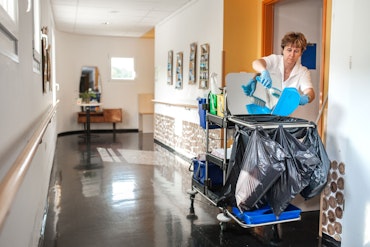With limited time left, 40,000 Australians miss out on suitable care
How important is palliative care and how can access be improved in rural areas?
![<p>Palliative care may be required later in life, but some people may find it harder to access because of location. [Source: Shutterstock]</p>](https://agedcareguide-assets.imgix.net/news/articles/wp/handlight2205.jpg?fm=pjpg&format=auto&w=550&q=65)
Palliative care may be required later in life, but some people may find it harder to access because of location. [Source: Shutterstock]
Key points:
- The number of palliative care-related hospitalisations increased by 29 percent in Australia over five years, according to recent data from the Australian Institute of Health and Welfare
- Various palliative care organisations have expressed concern regarding the limited options for appropriate care in rural areas
- Some funding allocation in the new Federal Budget could benefit the health of people living in rural and remote areas
Palliative care will be needed by 80 percent of Australians who are expected to die each year from illnesses including cancer and dementia, as per newly released data from the Australian Institute of Health and Welfare.
Karen Higgins, a spokesperson for the Australian Institute of Health and Welfare, understood the value of palliative care and how essential it is for patients in need.
“Care can be delivered by a wide range of health and community providers. It is not limited to any specific condition, and it can be delivered at any stage of illness. As such it is a complex, important, and emotive topic for study,” said Ms Higgins.
The number of palliative care-related hospitalisations increased by 29 percent in Australia over five years, according to recent data from the Australian Institute of Health and Welfare.
Dying at a younger age is more common for people living in rural areas compared to peers living in urban areas, as per data from the Australian Institute of Health and Welfare website.
The main aim of health professionals involved in palliative care is to keep the person comfortable, manage their symptoms and support the person in care and their family. To learn more about how palliative care may impact your family, visit this guide: Palliative care: How does it impact someone’s life?
A palliative care team is often multidisciplinary, meaning that multiple health professionals with different skills may be involved, including doctors, nurses, aged care workers and social workers.
Understanding more about palliative care and what it involves can be helpful, especially if you have just begun discussions about this type of care for you or someone you love. Read more about palliative care in this article: Hospitalisation for end-of-life care — what to expect.
However, accessing the appropriate health professionals in rural areas can be more difficult than for people living in metropolitan Australia.
Various spokespeople from organisations supporting palliative care patients voiced concerns about the reduced workforce in rural areas to support those in need.
Dr Christine Sanderson is a councillor of the Australia New Zealand Society of Palliative Medicine and the clinical lead at the Rural and Remote Institute of Palliative Medicine. She discussed the issue of palliative care and issues associated with reduced access for people living in rural areas.
“Palliative medicine in rural Australia is in crisis, the impact of which seems to be significantly under-appreciated,” Dr Sanderson said.
“Over seven million Australians — almost 30 percent of the population — live in rural communities. However, there are significant disparities in the kind of palliative care that is available in different geographic locations.
“One of the reasons for this is that only 16 percent of the specialist palliative medicine workforce live and work in rural and regional areas.
“We need to embed palliative care skills and values in rural and regional health services, through locally based specialist training opportunities, that connect with locally based primary health and aged care networks,” she said.
While the new Federal Budget doesn’t appear to contain specific funding allocations regarding palliative care for rural communities, improvements in the health sector may be appearing soon.
To combat widespread health workforce shortages, the Australian Government has allocated $90 million dollars in the new Federal Budget to make it ‘simpler and quicker for international health practitioners to work in Australia.’
Chief Executive Officer of Palliative Care Australia Camilla Rowland expressed her understanding about the importance of providing better incentives for qualified professionals to move into more rural areas.
“It’s widely acknowledged in the health sector that to grow a rural workforce you need attractive rural career pathways.
“Metro-centric training leads to fewer rural specialists, we need to change that so that graduate doctors can grow their palliative care skills in the bush and build a meaningful career and life in rural and regional communities,” said Ms Rowland.
In a release by Palliative Care Australia, Ms Rowland said that ‘it is conservatively estimated that 40,000 people who would benefit from palliative care treatment are missing out each year.’
Further funding of $227 million dollars in the Federal Budget is set to help ‘deliver a further 29 Medicare Urgent Care Clinics and boost support for regional and remote clinics.’
With more health support in rural communities, residents may have better access to clinicians who have experience in palliative care and can improve their quality of life.
Susi Tegen, the chief executive at National Rural Health Alliance, commended rural communities for supporting those in need but called for better support from the Australian Government.
“Rural communities have a great history of fundraising to support locally based hospice and end-of-life care; government and health services need to step up and play their part in order to deliver on the palliative care needs of the future,” said Ms Tegen.
Knowing when to begin planning for palliative care may become important if you or someone you know becomes ill if there are no treatment options available. Check out this article to learn more: When should you consider palliative care preparation?
Have you tried to access palliative care in a rural area for someone you love? What difficulties did you experience?
Let the team at Talking Aged Care know on social media.
For more information and news in the aged care industry, subscribe to our free newsletter.
Relevant content:
Why the 2024 – ‘25 Federal Budget has concerned advocates of older people
The fallout from losing friends and how treatment tackles it
How everyday Australians are making a difference in dementia research























